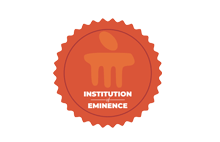Epidrugs in the clinical management of atherosclerosis: Mechanisms, challenges and promises
Document Type
Article
Publication Title
European Journal of Pharmacology
Abstract
Atherosclerosis is a complex and multigenic pathology associated with significant epigenetic reprogramming. Traditional factors (age, sex, obesity, hyperglycaemia, dyslipidaemia, hypertension) and non-traditional factors (foetal indices, microbiome alteration, clonal hematopoiesis, air pollution, sleep disorders) induce endothelial dysfunction, resulting in reduced vascular tone and increased vascular permeability, inflammation and shear stress. These factors induce paracrine and autocrine interactions between several cell types, including vascular smooth muscle cells, endothelial cells, monocytes/macrophages, dendritic cells and T cells. Such cellular interactions lead to tissue-specific epigenetic reprogramming regulated by DNA methylation, histone modifications and microRNAs, which manifests in atherosclerosis. Our review outlines epigenetic signatures during atherosclerosis, which are viewed as potential clinical biomarkers that may be adopted as new therapeutic targets. Additionally, we emphasize epigenetic modifiers referred to as ‘epidrugs’ as potential therapeutic molecules to correct gene expression patterns and restore vascular homeostasis during atherosclerosis. Further, we suggest nanomedicine-based strategies involving the use of epidrugs, which may selectively target cells in the atherosclerotic microenvironment and reduce off-target effects.
DOI
10.1016/j.ejphar.2024.176827
Publication Date
10-5-2024
Recommended Citation
Panduga, Sushma; Vasishta, Sampara; Subramani, Ramamoorthy; and Vincent, Sthevaan, "Epidrugs in the clinical management of atherosclerosis: Mechanisms, challenges and promises" (2024). Open Access archive. 9941.
https://impressions.manipal.edu/open-access-archive/9941


